On this page we’re checking out the JDS Labs Atom+ DAC & AMP stack performance. If Google took you here directly, click here to go to the start of the article.
JDS Labs Atom DAC 2 & Atom AMP 2 Stack Performance
Excellent, as you’d imagine. The neutral couple acts as a conductor, as a bridge between the track and your headphones. Both of the units are very capable and technically impressive units and they sound transparent, neutral, and clean together. Thanks to their linear signature, the sound is highly dependent on the headphones you plan to use the stack with. If you have a headphone with a balanced signature, such as the Hifiman Nano, you’ll hear a balanced signature. It’s an excellent pairing where the Nano gets fed easily and reaches loud I mean LOUD levels without any clipping or distortion. It sounds crystal clear with this pairing with a wide and deep stage where there is plenty of air and space. If you pair the stack with a highly analytical IEM, you’ll have yourself an error-catcher system that is designed to highlight the mastering issues of your tracks. Synergy is a topic that I care about, and I try to aim for balance and accuracy. Still, too much accuracy could invite a soulless, dry presentation to your listening session. Before that, try to understand what you enjoy first so that you can be a happier audiophile in the long run.
For example, matching this stack with my filters removed 58X results in a balanced yet somewhat warm reproduction with good bass authority, thick midrange, and tamed upper-mid section, along with good treble extension and clarity. Pairing it with the Hifiman Edition XS, I now hear impressive bass depth, a fairly good soundstage, and an overall neutral-warm signature that plays well with many genres. I am conveying this process to you so you can think about matching and pairing this stack successfully according to your taste. On another note, the stack offers quite an impressive technical capability like the Atom+ stack; the transients are fast, and the attack and the decay feel agile. Harmonics and micro details are easy to follow, thanks to the clean, transparent presentation. The tonality is as accurate as it gets in this price bracket. To be honest, there aren’t many alternatives in this price bracket that can topple the Atom 2 stack.
Comparison
vs. JDS Atom+ Stack ($208 USD)
I compared both stacks side-by-side, and you should be aware of a couple of things. Firstly, the new enclosures feel much better, more durable, and more robust than the older injection mold enclosures.
They also feel better assembled, the DAC’s light ring and the amp’s volume pot feel more premium compared to the older gen. SQ-wise, I couldn’t hear any difference between the Atom+ and Atom DAC 2 with my current reference monitors (Focal 80s). Maybe I would have if I had something more analytical and transparent, but since it’s a combination of 1000€ speakers and a 100$ DAC, it is very safe to say that the DAC did not feel like it was bottlenecking my unit at all, which is fantastic! As for the AMP, I liked the extra oomph with my planars; it felt slightly cleaner, and if you have a harder-to-drive headphone, you may also feel this way with the new Atom 2 AMP. If you already have the Atom+ or HEVI edition, I wouldn’t recommend upgrading for the sound quality alone.
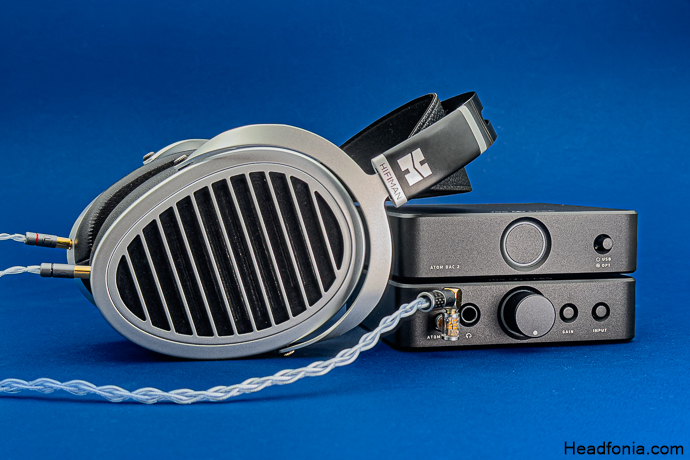
vs. E30 II & L30 II ($300 USD)
Another excellent combo in this price bracket is the E30 II & L30 II stack. They cost $42 USD more than the JDS stack and also present a neutral reference signature. Here’s small quote from my review: “Topping’s E30 II & L30 II units naturally have a good synergy with each other. Both units are technically capable and have a clean, neutral, and resolving sound signature. They have a very good resolution and a clean sound signature that impressed me from the first listen.”
Stack does a very good job of conveying the sound signature of the equipment you’re paired to, just like the JDS. Both stacks don’t add color to the mix or saturate the sound signature of your IEMs or HPs. However, when I compare individual units, I find E30II slightly better with my reference monitors. It feels a tad cleaner with more defined instrument separation and better treble. I couldn’t hear any difference between the AMPs (Atom 2 AMP vs. L30 II) whatsoever. Then, I combined E30II with the Atom 2 AMP, resulting in a stellar combo that I immensely enjoyed. Still, under 300 USD, this combo has incredible performance, and you’d need to spend double, perhaps, to get a better deal, price-to-performance-wise. Compared to the Atom 2 DAC & Atom 2 AMP, this combo had a better end-to-end extension, better separation, and a wider soundstage. I used Hifiman’s Nano exclusively with these comparisons, so your findings may vary.
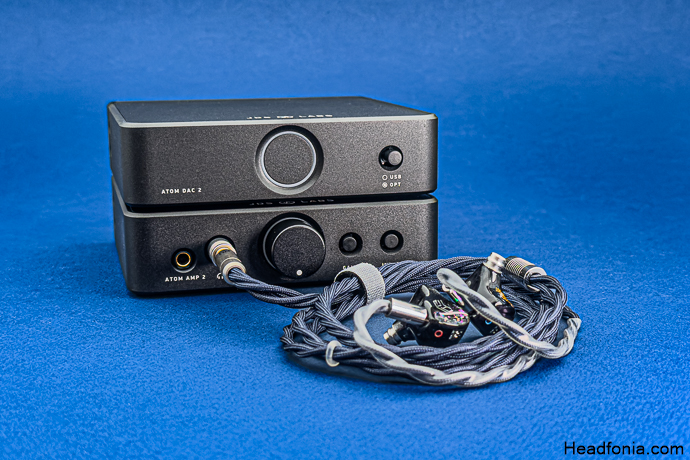
Pairings
Sennheiser & Drop HD58X ($170 USD)
I have a modded Drop & Sennheiser collaboration model called “58X.” (I removed the grille foam and circular damper behind the driver.) This was my favorite pairing with the previous-gen Atom+ stack, and it definitely still is. This is a solid pairing that can entertain you in whatever genre you throw at it. The bass is authoritative, impactful, and rounded while still offering good PRaT. The midrange is sweet, articulate, and surprisingly detailed, albeit slightly in-your-face. The note-weight is balanced and feels natural. Instruments and vocals feel prominent on the stage with good definition and resolution. The timbre doesn’t feel artificial or digital, which is brilliant for a sub-400 setup! The treble is airy and clean and the extension is very good. Try this budget combo. It will surprise you.
Hifiman Ananda Nano ($599 USD)
Hifiman’s Ananda Nano is another HFN recommendation that I’ve been using since the launch. It’s a great headphone that does many things right, and it plays very well with the Atom 2 stack.
They sound detailed, revealing, and spacious together. The stack has plenty of power to drive the Nano to its max. Signature-wise, they are compatible as Nano has a balanced signature with a medium-to-wide stage that gets boosted by the neutral side of the Atom 2 stack. The technical capability of this pairing is certainly impressive, with impressive resolution, definition, and pristine highs.
Last Words
In an era of ever-increasing prices, JDS Labs’ determination to maintain a reasonable price point is truly remarkable. This demonstrates a customer-first approach that resonates with fans of JDS Labs as well as audiophiles on a budget. The Atom 2 series delivers exceptional sonic performance that can easily compete with devices well above its price range. The new all-aluminum design ensures improved aesthetics and long-term durability, while updated audio boards enhance what was already great about the Atom range.
If you’re looking for a versatile, high-performance DAC/amplifier solution that seamlessly drives IEMs, active monitors, and headphones without breaking the bank, JDS Labs deserves serious consideration. It is now on the HFN Recommendation List, where it is in good company.

Pros
+ Excellent Price-to-Performance Ratio
+ Excellent Sound
+ Excellent Build Quality
Cons
– Huge Power Adapters
Page 1: JDS Labs, Atom DAC 2, What’s New?, Packaging & Accessories, Design & Build Quality, Features, DAC Performance
Page 2: JDS Labs Atom AMP 2, Packaging & Accessories, Design & Build Quality, Features, AMP Performance
Page 3: JDS Labs Atom 2 DAC & AMP Stack Performance, Pairings & Comparison, Last Words







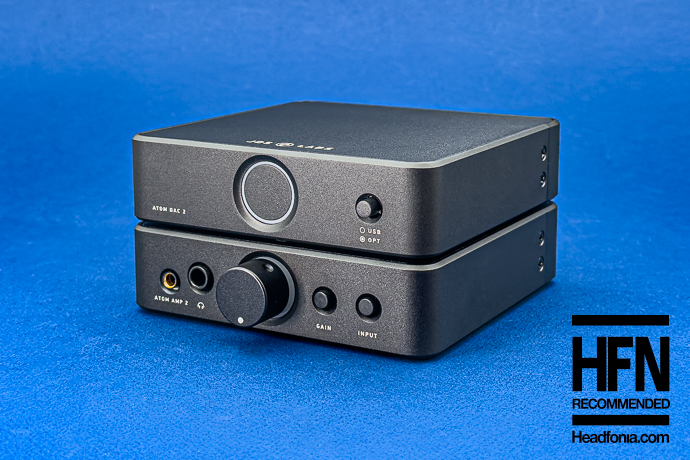
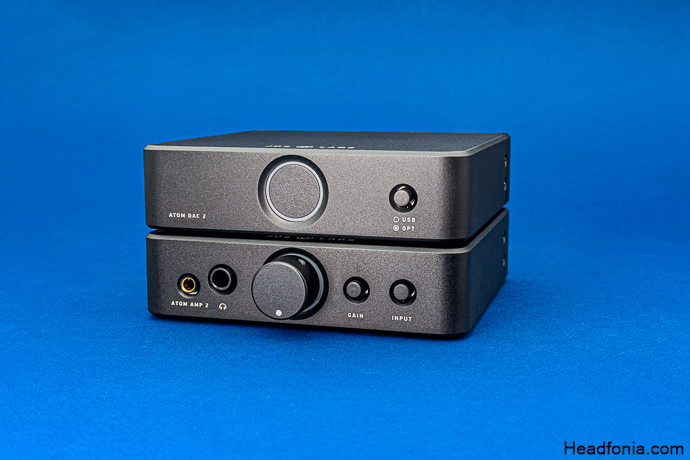
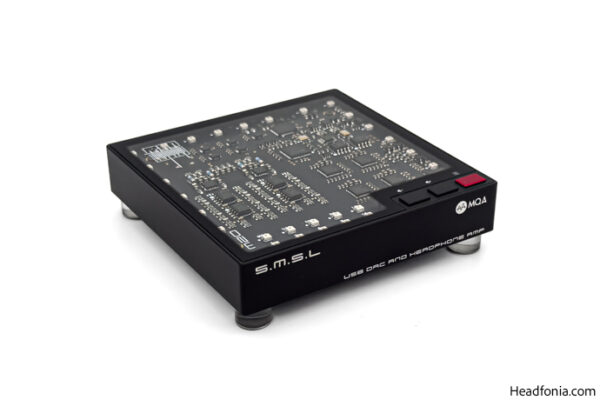
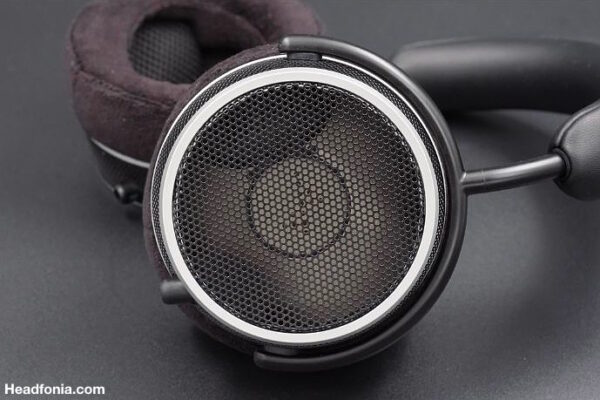
Gregory Davis
Having owned & enjoyed the JDS labs Atom+ stack for 2+ years… I feel it is important to comment on the benefit of the “huge” power adapters that are a definite PRO!
They are passive analog transformers that Do Not Radiate power supply switching noise which pollutes the immediate local RF zone! My vintage – yet exceptionally good FM tuners – can be made unlistenable by insufficiently shielded devices (the SMSL SU/SA 6 & others are quite guilty of this radiated switching psu noise pollution).
In future reviews I (& others to be sure) would appreciate and benefit if you could include radiated noise from switching power supplies & cpu processing.
Thank you for earning the #1 qualitative reviewer position in my lovely world of Headphonia listening.
WK
Have you done a review of the Archel 3 Pro yet? Saw there was a 2.5 Pro review
Packgrog
I’m particularly curious how this stack compares to the Element III. I still have the Element II, and have been pondering an upgrade since I honestly prefer the presentation of a Sabre DAC to the more sterile sounding AKM chip used in the Element II. Given that the Element III is a good amount of money over the price of the Atom 2 stack, I’d be curious about the pros and cons of each setup.
Paul Woaert
Hello.
Will the combo Atom DAC 2 / Atom AMP 2 used with the Beyerdynamic DT-990 Pro headphones (open headphones) give a dry and simply analytical tone ? This is what your analysis seems to announce (in the part of your text concerning the synergy).
When I use the combo iFi Audio Zen Dac 2 / iFi Audio Zen CAN (amp) with my Beyerdynamic DT-990, the sound is not at all exaggeratedly dry and analytical, it is quite clear and at the same time pleasant, rolled up with bass just well dosed enough.
Related question: what is the essential difference between the Atom AMP 2 and iFi Audio Zen CAN which is also an amp (which can increase the power by 6dB, 12dB or 18 dB).
Ned
I would like to know how far ahead this stack is compared to the budget FIIO k11 (non r2r)?
I find the k11 very neutral but despite plenty apparent detail it does not retrieve as much as the best. I also find its apparent detail seems to actually be quite one tone in that micro detail like one freq band is elevated compared with others (this could be my oem’s)